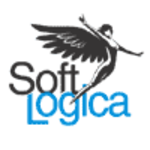Description

Loadium

Tricentis Tosca
Comprehensive Overview: Loadium vs Tricentis Tosca
Loadium and Tricentis Tosca are both tools used in the field of software testing, but they cater to different aspects of the testing process and target different market segments. Here’s a comprehensive overview of each:
Loadium
Primary Functions and Target Markets:
-
Primary Functions:
- Loadium is primarily a performance testing tool. It is used to test web applications and their ability to handle heavy loads and stress. The platform allows users to create, run, and analyze performance tests to ensure that applications can handle high traffic and function reliably under load.
- It integrates with Apache JMeter, which enhances its capabilities by allowing users to import existing JMeter scripts and extend them with Loadium’s cloud-based infrastructure.
- Loadium provides features for real-time monitoring and reporting, supports distributed load testing, and offers the ability to simulate virtual users from different geographic locations.
-
Target Markets:
- Loadium is targeted mainly at businesses that require robust performance testing tools but might not have the infrastructure to run large-scale load tests in-house. This includes small to medium-sized enterprises (SMEs), as well as larger organizations that develop web-based applications.
Tricentis Tosca
Primary Functions and Target Markets:
-
Primary Functions:
- Tricentis Tosca is a model-based test automation tool that focuses on functional testing, which includes automation, performance testing, security testing, and more.
- It supports end-to-end testing for applications on various platforms such as web, desktop, mobile, mainframe, and more. Tosca uses a model-based approach, allowing users to create reusable models for automated test scripts without having to write code, which makes it accessible for users with less technical expertise.
- The tool features capabilities like risk-based testing, service virtualization, and lifecycle management integration.
-
Target Markets:
- Tricentis Tosca primarily targets large enterprises with complex testing requirements, particularly those in industries such as banking, insurance, telecommunications, and retail, where comprehensive test automation and risk management are crucial.
Comparison in Terms of Market Share and User Base:
-
Market Share:
- Loadium is relatively niche compared to Tricentis Tosca. Its primary appeal is to users who need scalable performance testing without the overhead of extensive infrastructure.
- Tricentis Tosca, on the other hand, has a significant market presence in the test automation sector, with a broad user base, especially among large enterprises looking for comprehensive testing solutions.
-
User Base:
- Loadium’s user base tends to be smaller, made up of development teams and QA professionals within SMEs, or those seeking a cost-effective cloud-based solution for load testing.
- Tricentis Tosca’s user base is larger, consisting primarily of QA specialists, test managers, and IT departments within large organizations that require robust, scalable, and integrative testing tools.
Key Differentiating Factors:
-
Testing Focus:
- Loadium is specialized in performance and load testing, whereas Tricentis Tosca offers a wide range of testing capabilities, including functional, performance, integration, and security testing.
-
Approach to Testing:
- Loadium leverages JMeter scripts and focuses on cloud-based load testing, offering scalability for performance testing without in-house infrastructure.
- Tricentis Tosca uses a model-based test automation approach, which simplifies the creation and maintenance of test cases, making it suitable for teams with less programming experience.
-
Integration and Ecosystem:
- Loadium integrates primarily with JMeter and focuses on enhancing performance testing with cloud capabilities.
- Tricentis Tosca provides robust integration with various lifecycle management tools and platforms (like Jira, SAP, etc.), allowing for a more comprehensive software testing lifecycle management.
-
Targeted Industries:
- Loadium is often used by web application developers regardless of industry due to its niche in performance testing.
- Tricentis Tosca is favored by organizations in heavily regulated or technology-driven industries that demand a complete suite of test automation tools to ensure compliance and quality.
In conclusion, both Loadium and Tricentis Tosca fulfill distinct roles within the realm of software testing, catering to different market needs and testing requirements. Their key differentiators lie in the type of testing they prioritize, their approach to automation, and their respective target audiences.
Contact Info

Year founded :
2017
Not Available
Not Available
Turkey
http://www.linkedin.com/company/loadium

Year founded :
Not Available
Not Available
Not Available
Not Available
Not Available
Feature Similarity Breakdown: Loadium, Tricentis Tosca
When comparing Loadium and Tricentis Tosca, both tools are part of the software testing ecosystem but cater to somewhat different aspects of testing, which can lead to both similarities and differences in their feature sets. Below is a breakdown of their feature similarities and differences:
a) Core Features in Common
-
Test Automation:
- Both Loadium and Tricentis Tosca support automation testing, although the focus is slightly different with Tricentis Tosca being more expansive in terms of functional test automation, including UI, API, and more.
-
Performance Testing:
- Loadium specializes in load and performance testing, while Tricentis Tosca has capabilities that support performance testing, though not as central or extensive as Loadium.
-
Integration with CI/CD Tools:
- Both tools offer integration capabilities with popular CI/CD pipelines to support DevOps practices.
-
Cross-Platform Testing Support:
- Provide support for testing various applications across different platforms.
-
Cloud-Based Solutions:
- They offer options for cloud-based testing, which is crucial for organizations looking to scale their testing efforts.
b) User Interface Comparison
-
Loadium:
- Generally has a focused interface primarily designed to configure and run load tests. It emphasizes simplicity and ease of use for performance testing with dashboards that provide real-time analytics and reporting.
- The UI is intuitive for users primarily interested in handling and understanding load testing metrics.
-
Tricentis Tosca:
- Offers a more comprehensive and feature-rich interface due to its broader test automation capabilities.
- Tosca has a model-based testing approach, which involves designing tests in a user-friendly, scriptless interface, making it accessible to users with less programming skill.
- Provides a suite-like environment where multiple aspects of testing (functional, API, regression) can be managed in an integrated manner.
c) Unique Features
-
Loadium:
- Specialized Load Testing Features: Loadium is specifically built for load and performance testing, providing features like distributed load testing, support for JMeter test scripts, and advanced reporting on system performance under stress.
- Load Testing Marketplace: It has a marketplace feature for sharing and reusing load test scripts.
-
Tricentis Tosca:
- Model-Based Test Automation: Tosca’s model-based approach allows users to create test cases without scripting, improving accessibility for testers without programming skills.
- Comprehensive Test Management: Beyond performance, Tosca offers capabilities for managing test cases, test data, and test environments in one place.
- Broad Application Testing: Offers extensive support for different types of testing such as mobile, API, and end-to-end testing, making it a versatile tool for various testing needs beyond performance.
- Risk-Based Testing: Tosca provides features for prioritizing test cases based on risk, helping focus efforts on critical areas.
In summary, while both Loadium and Tricentis Tosca overlap in some areas of test automation and performance testing, they serve different primary purposes, with Loadium being more specialized in load testing and Tricentis Tosca offering a wider range of functional testing capabilities. Each tool's unique features cater to different testing needs and can complement each other depending on an organization's requirements.
Features

Test Management
Performance Testing
Reporting and Analysis
Integration

Risk-Based Testing
Test Automation
End-to-End Testing
Collaboration and Reporting
Best Fit Use Cases: Loadium, Tricentis Tosca
Loadium and Tricentis Tosca serve different purposes in the realm of software testing and cater to various business needs. Here's a breakdown of their best-fit use cases:
Loadium
Loadium is primarily a load testing tool dedicated to assessing the performance, scalability, and reliability of web applications. It is particularly suited for:
a) Best Fit for Businesses/Projects
-
Web-based Companies: Businesses that rely heavily on web applications, such as e-commerce platforms, SaaS providers, or any business with high traffic websites, will benefit from Loadium's ability to simulate user loads and identify bottlenecks.
-
Development Teams focusing on Web Performance: Projects that are entering production or are experiencing rapid growth phases will find Loadium useful in scaling application performance effectively.
-
SMEs with Cost Constraints: Smaller to medium enterprises looking for an affordable yet effective load testing solution will find Loadium appealing due to its pricing model and ease of use.
d) Industry Verticals and Company Sizes
- Industry Verticals: E-commerce, technology startups, digital marketing, and any service-oriented industry with a strong online presence.
- Company Sizes: While it can be used by larger enterprises, Loadium is particularly beneficial for SMEs due to its cost-effectiveness and straightforward setup.
Tricentis Tosca
Tricentis Tosca is a comprehensive test automation tool that covers a wide array of testing needs, including functional, integration, regression, and end-to-end testing. It is well-suited for:
b) Preferred Scenarios
-
Complex Enterprise Applications: Enterprises with diverse and complex application landscapes—such as those found in finance, insurance, and large-scale ERP systems—will benefit from Tosca's model-based automation, which simplifies the testing of intricate applications.
-
Agile and DevOps Environments: Organizations that have embraced Agile and DevOps practices and require continuous testing integration will find Tosca's capabilities align well with continuous delivery pipelines.
-
Cross-Technology Testing Needs: Projects requiring testing across multiple platforms and technologies (e.g., web, mobile, desktop, mainframe) will benefit from Tosca's broad support for different technologies and its robust integration capabilities.
d) Industry Verticals and Company Sizes
- Industry Verticals: Banking, finance, telecommunications, healthcare, and other heavily regulated industries where software quality is critical.
- Company Sizes: Typically targeted at large organizations or those with substantial IT departments due to its comprehensive features and higher cost.
Overall, Loadium and Tricentis Tosca cater to different aspects of application testing, each focusing on specific testing goals and catering to various industries and company sizes. Loadium serves primarily web-focused organizations interested in performance testing, while Tricentis Tosca supports extensive test automation needs across a broad array of technologies and enterprise environments.
Pricing

Pricing Not Available

Pricing Not Available
Metrics History
Metrics History
Comparing teamSize across companies
Conclusion & Final Verdict: Loadium vs Tricentis Tosca
When evaluating Loadium and Tricentis Tosca, the best overall value depends on the specific needs and context of the organization. Here’s a comprehensive analysis for consideration:
a) Best Overall Value
Tricentis Tosca likely offers the best overall value for enterprises seeking comprehensive testing solutions due to its robust suite of features, advanced automation capabilities, and strong support for end-to-end testing. It is particularly suitable for larger organizations with complex testing requirements.
Loadium, on the other hand, offers excellent value for organizations primarily focused on performance testing and those preferring a cloud-based solution. It is a more budget-friendly option for companies not in need of extensive test case management or enterprise-level features.
b) Pros and Cons
Tricentis Tosca
-
Pros:
- Comprehensive Test Automation: Offers an extensive range of test automation capabilities, including model-based testing and support for a wide range of applications.
- Integration and Scalability: Integrates well with other tools and scales effectively to meet enterprise requirements.
- User-friendly Interface: Provides a user-friendly interface that allows non-technical users to participate in test automation.
- Strong Support and Community: Offers excellent support and a strong user community.
-
Cons:
- Cost: Higher cost, which might not be justified for smaller projects or organizations with limited budgets.
- Complexity: May have a steeper learning curve for new users, especially those without prior experience in test automation.
Loadium
-
Pros:
- Cost-effective: More affordable, especially for small to medium-sized businesses.
- Cloud-based: Easy setup and scalability without the need for extensive infrastructure investment.
- Focus on Performance Testing: Specializes in load testing, offering a straightforward approach for specific performance testing needs.
- User-friendly: Intuitive user interface that eases the process of creating and managing load tests.
-
Cons:
- Limited Functionality: Primarily focused on performance/load testing, lacking the breadth of features for functional and automated testing.
- Less Comprehensive Integrations: May not integrate as seamlessly with other enterprise tools compared to Tricentis Tosca.
- Less Suitable for Complex Test Scenarios: May not be ideal for organizations needing comprehensive test management and execution capabilities.
c) Recommendations
-
For Organizations Needing Comprehensive Test Automation: Tricentis Tosca is the better choice for enterprises requiring a full-fledged automated testing suite that covers a broad spectrum of test cases and integrates with various enterprise systems.
-
For Organizations Focused on Cost-Effective Performance Testing: Loadium is suitable for businesses that need an affordable, efficient solution for load and performance testing without the overhead of extensive test management features.
-
Decision-Making Factors:
- Consider the size and complexity of your test environment and whether the additional features of Tricentis Tosca justify its higher cost.
- Evaluate whether your primary requirement is load/performance testing or a more comprehensive test automation suite.
- Assess your team's technical capabilities and willingness to invest time in learning a potentially complex tool like Tosca.
- Consider future scaling needs; if you're a growing company, investing in Tricentis Tosca might offer longer-term benefits.
Ultimately, organizations should choose based on their specific testing needs, budget constraints, and strategic goals, keeping in mind the pros and cons associated with each tool.
Add to compare
Add similar companies



